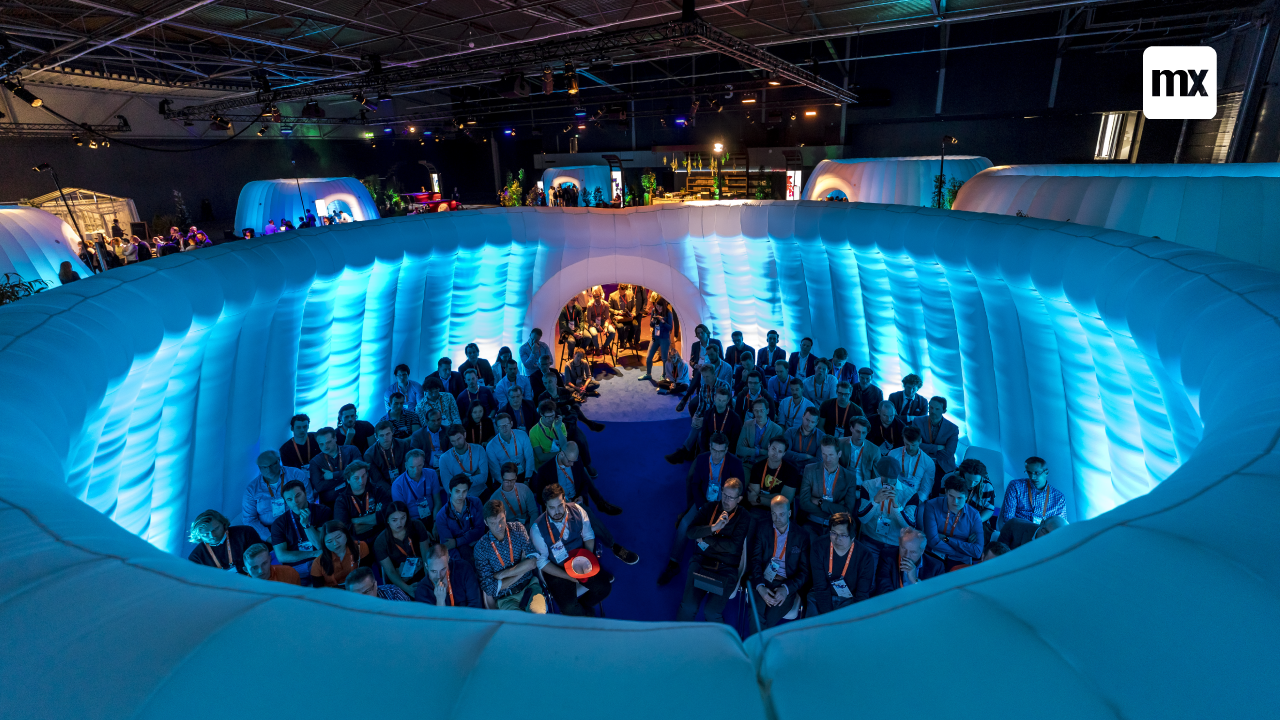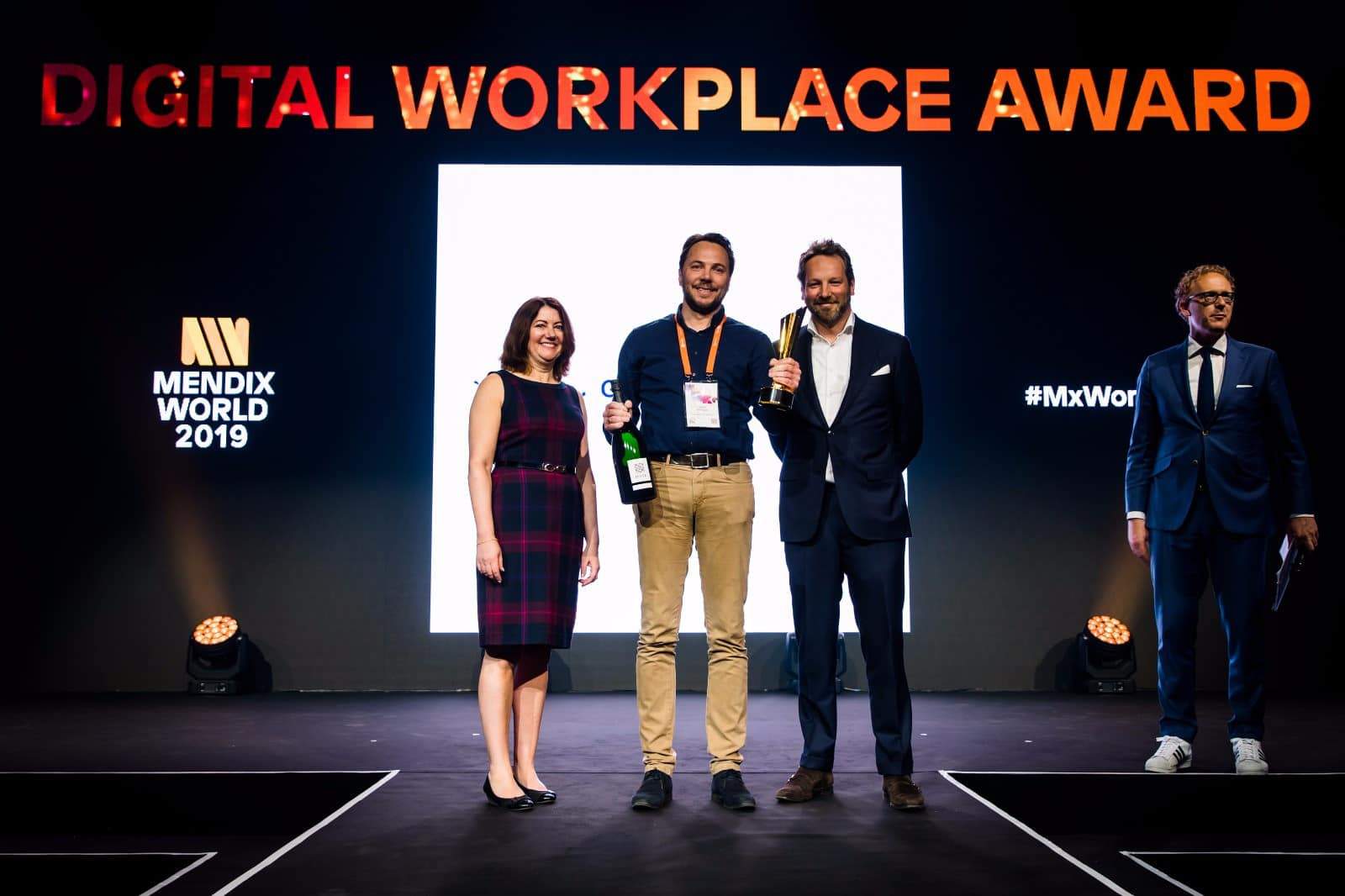
When you first meet Martijn Groenewegen, his passion for innovation and improving the quality of life for the citizens of Rotterdam is obvious. He’s worked for the City for almost 20 years in a number of different IT roles, most recently as the Head of Digital Strategy and Support. As a student in Rotterdam in the 1990s, he experienced a very different city than the one CNN recently called “Europe’s New Capital of Cool.”
Rotterdam is the largest port in Europe and has been a global economic and logistical hub for centuries. The entire city center was all but destroyed in WW2, compelling the city leaders at the time to make a bold decision. Instead of rebuilding to recreate the past, they moved forward with a vision to build a modern city equipped to meet the needs of future commerce and its residents. The need to rebuild an entire city from the ground up drove a culture of constant progress within the city. As Martijn puts it, “It’s key to the culture of Rotterdam that we want to improve, always building stuff, and trying to innovate. We’re always trying to, in a pragmatic way, solve real problems. That’s the heart of a real Rotterdam person.”
So when he saw the need to deliver more city services through digital channels to serve the citizens, he and his co-workers eagerly looked for ways they could contribute.
Solving the collaboration puzzle
As is the case with many public sector organizations, cost control is always top of mind. This is especially true in IT, where expenses are inherently costly. The City of Rotterdam was organized into five main business units, with IT operating in a shared service model that would centrally support the different groups. While this consolidation proved effective from a cost perspective, it led to a lack of IT expertise closer to the business units that were trying to serve the citizens. As a result, IT wasn’t always focused on innovation and delivering new solutions because they didn’t have the first-hand exposure to the challenges the business was trying to solve. They were doing their best to keep operations up and running with always tightening budgets – no small task.
At the same time, the business units didn’t stop trying to introduce new services. Teams were constantly trying to launch new solutions and new answers to solve problems, which led to a proliferation of shadow IT around the organization.
Groenewegen observed these two corresponding puzzle pieces and understood what was possible if the groups could somehow find a way to collaborate on a regular basis. Instead of looking at Shadow IT as something to fear, he engaged those in the business that were savvy enough to attempt their own solutions and found they also wanted a closer relationship with IT to help with complex issues like regulations, compliance, security, and stability.
Introducing Agile
Groenewegen wanted to implement an Agile way of working to encourage the kind of collaboration he thought was needed. His vision was to have stakeholders from IT and the business units co-creating solutions together that solved business challenges and were also technically sound. If Agile was the road that led to collaboration, they saw Mendix and low-code as the vehicle that would help them get there.
Groenewegen and the team wanted business users to participate first hand in the application development process, ensuring what was being built aligned to their initial requirements and allowed the ability to iterate with ease when needed. Most custom applications fail not because they are too difficult to code or build, but because they aren’t aligned to the business challenges they are meant to solve.
That’s where Erik van der Steen got involved. Born in Rotterdam less than a mile from where he spoke at Mendix World in April of 2019, van der Steen leveraged his experience and relationships from his 10 years working at the City of Rotterdam to lead the new Agile teams and their Rapid Application Development efforts. van der Steen formed a team consisting of an architect, an integration specialist, two junior Mendix developers, and himself as a coordinator. The organization in which they chose to work was a critical key to their success. They worked specifically in the Information Management department because of that team’s frequent interaction with the business. van der Steen wanted this relationship with the business to be the foundation of their new way of working. van der Steen’s expert team supported a group of 10 people who were building solutions with the business units, and three citizen developers in specific departments. The expert team guided the broader teams on issues like security, privacy, UX and UI – adding the needed IT skills and oversight to projects the business was trying to launch.
Starting out and continuously iterating
To start, the group facilitated six portfolio discussions where they fielded pitches from business stakeholders for services and products they wanted. During this process, they challenged business teams to provide a value case for the app, and to assign a dedicated product owner from the business. They received 30 pitches from their business colleagues, and three were chosen to be made into applications.
From this initial experiment, they learned a few key lessons. First was the need for a dedicated product owner. “If they are not really dedicated, then you better stop your project because it’s going to take a very long time and you’re not getting the functionality that you want,” said van der Steen. A dedicated SCRUM master was also just as important. Lastly, celebrating their successes and communicating their mission to the rest of the organization was something they wish they had done better.

“Well, the biggest challenge was, I think, to convince our internal IT colleagues that we were really doing something serious. And I think still some of them are not still convinced, but, well, I hope that … things like this, you know, presenting this, and perhaps getting an (Impact) award for one of our apps helps internally to get the knowledge that it’s really valuable what we are doing.” van der Steen’s hopes were answered at Mendix World when the City of Rotterdam won an Impact Award for their efforts in building a Digital Workplace.
A commitment to RAD
After seeing the success in this initial experiment, Groenewegen and van der Steen decided they wanted Rapid Application Development to play a larger role within their organization. To support a larger scale rollout, van der Steen worked with his colleagues in IT to get documented overviews of their architectural landscape and integration processes. He also collected requirements for security, privacy and other details to provide the teams with a checklist for developing applications that fit within a common framework. This was key to support consistency and scalability, and to promote re-use of common components for efficiency.
van der Steen’s efforts to provide a common framework helped the team develop six applications in a fairly short amount of time. These solutions included:
ISA (Incoming Subsidy Administration) – The City of Rotterdam is eligible to apply for various subsidies from the EU, province of South Holland, and other entities. However, they must adhere to strict application deadlines or else they lose out on eligible funds. This process was managed by 4 separate spreadsheets in the past, leaving lots of room for human error and oversight that lead to missed deadlines and missed funds. The ISA application aggregates all information in a central repository that’s updated nightly to give the team the accurate, up to date info they need to hit all their deadlines and maximize available funds.
THIS010 – Surveillance and Enforcement – This solution is used by about 300 city employees on the street that can report violations and issue citations. This replaces a legacy application that needed to be re-built to be GDPR compliant. They have a mobile version for those in the field, and a desktop version for team leaders back in the office.
RBP – Citizen Visitor Parking Management – RBP is a mobile app that allows citizens to reserve guest parking spots at discounted rates in designated areas of the city.
trashR – Trash Collection On-demand for Shop Keepers – Through a mobile app, small business owners can schedule trash pickup on-demand for specific items that can’t be taken through regular trash collection services. The MVP was actually built by students at Hogeschool Rotterdam, who were enrolled in a Mendix curriculum through the Mendix University Program.
010 Projects – IT Project Report for City Council. This internal application provides an overview of all major IT projects for review by the City Council. In the past, aggregating this report manually took over 8 months. By the time the information made its way to the City Council, it was often outdated and not helpful for decision making. Now, the City Council has an up to date view into projects in flight to aide in management and decision making.
BBA – Request Special Assistance for Low Income Individuals – The BBA application is used for citizens that are eligible for special assistance to apply for services from the city. This replaces an old manual process that wasn’t optimized to request and gather the necessary documentation to validate applications. The BBA app allows requests to be processed six times faster, allowing for quicker delivery of services to those in need.
The six apps together held a cumulative value of an estimated €1 million – €1.6 million.
Leading the way
When van der Steen and Groenewegen took the stage at Mendix World in April of 2019, they had 15 applications currently in production, with another 20 to come in various stages of development. Of course, the goal of all of this was never to just build apps – it was to innovate and ultimately deliver better services to the citizens of Rotterdam that they serve. Groenewegen hopes this initiative that stemmed from a uniquely Rotterdam mindset can serve as an example for other local governments on driving innovation to better serve the people.
